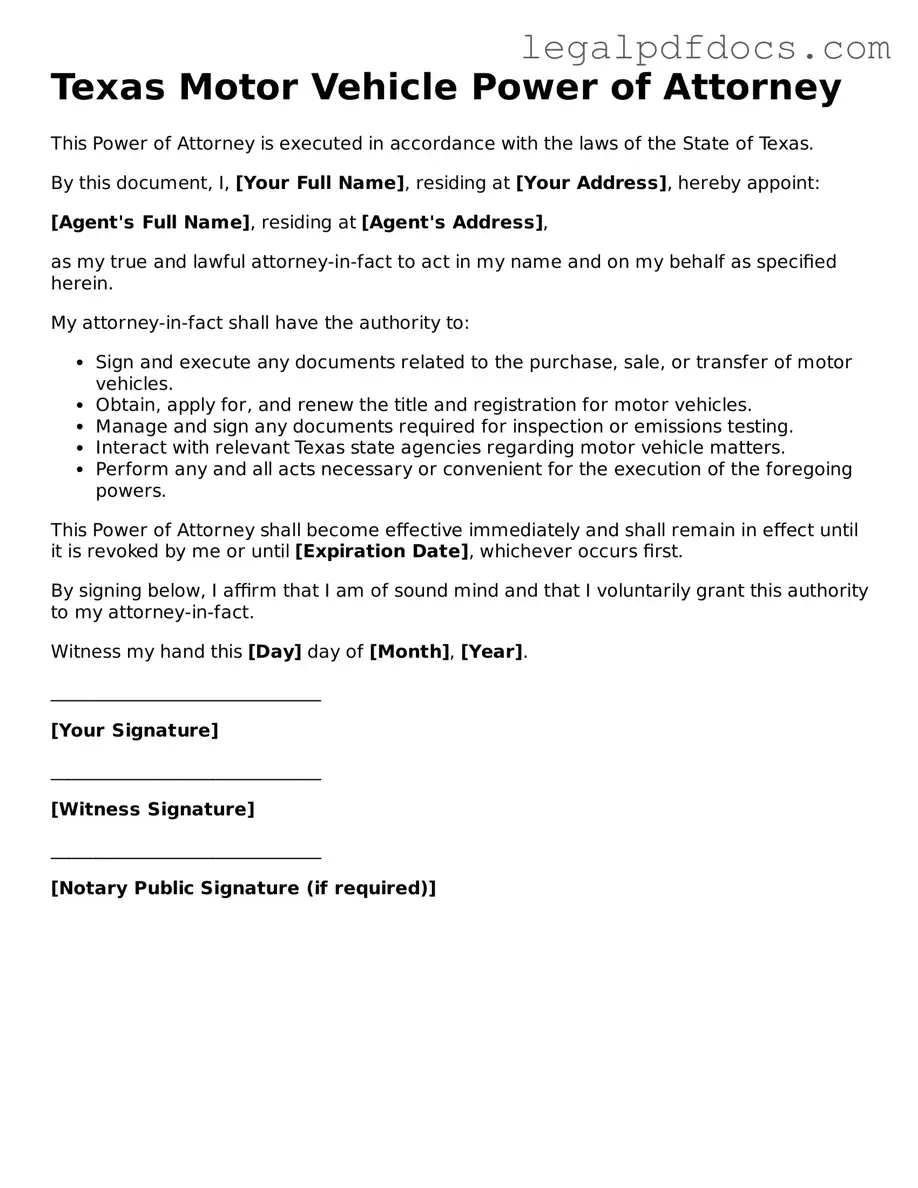Official Motor Vehicle Power of Attorney Form for Texas
The Texas Motor Vehicle Power of Attorney form allows an individual to designate another person to handle specific tasks related to their motor vehicle. This can include signing documents, transferring titles, or managing registrations on behalf of the vehicle owner. If you need to grant someone this authority, consider filling out the form by clicking the button below.
Open Motor Vehicle Power of Attorney Editor Here
